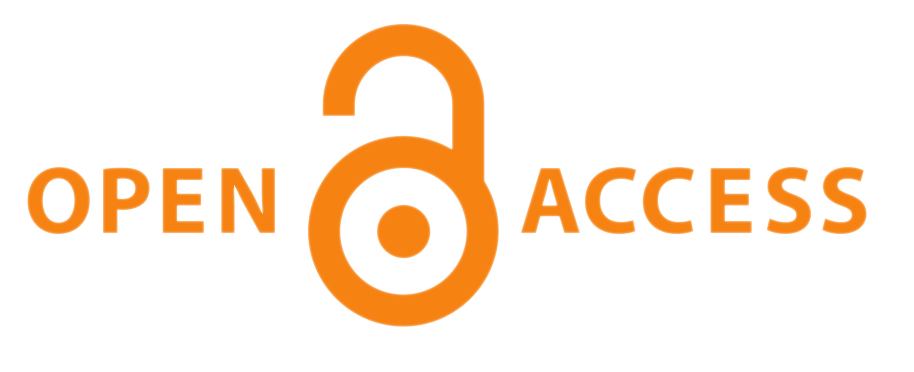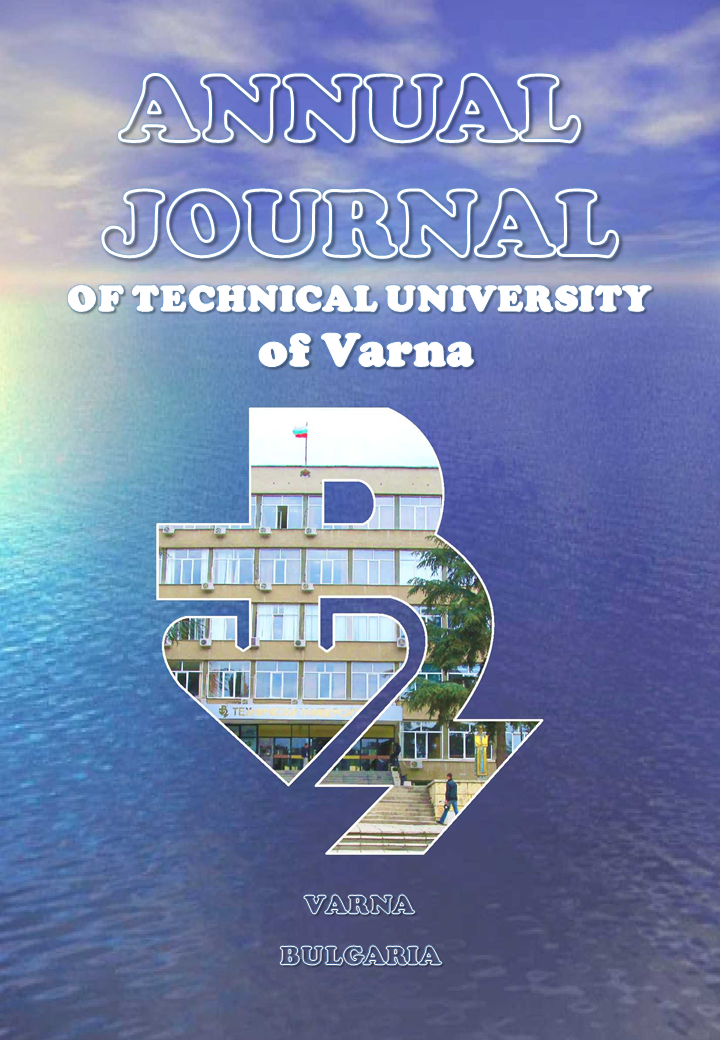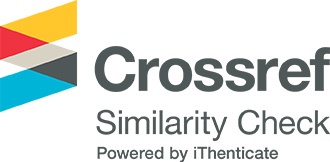Some Aspects of Semantic Frames and Meaning
DOI:
https://doi.org/10.29114/ajtuv.vol2.iss1.68Keywords:
cognitive linguistics, semantic frames, image schemas, motion verbsAbstract
The paper offers a review of the linguistic literature dealing with the cognitive approaches to exploring language. It focuses on frame semantics as presenting a systematic description of language meaning and the role of frames in creating conceptual categories. The approaches discussed are applied to a corpus of technical texts and the examples are analysed in terms of the framework suggested.
Downloads
References
<p>Boas, H. (2002). "Bilingual FrameNet Dictionaries for Machine Translation". In Proceedings of the third International Conference on Language Resources and evaluation, Vol. IV., ed. M.G. Rodriguez, C.P.S. Araujo, 1364 1371. University of Las Palmas.</p>
<p>Croft, W. (2002). Radical Construction Grammar: Syntactic Theory in Typological Perspective. Oxford: Oxford University Press.</p>
<p>Evans V., Green M. (2006). Cognitive Linguistics. An Introduction. Edinburgh University Press.</p>
<p>Fillmore, C. (1977a). "The Case for Case Reopened". In Syntax and Semantics 8: Grammatical Relations, ed. P. Cole, 59 – 81. New York: Academic Press.</p>
<p>Fillmore, C. (1977b). "Scenes-and-frames Semantics". In Linguistic Structure Processing, ed. A. Zambolli, 55 – 82. Amsterdam: North Holland Publishing Company.</p>
<p>Fillmore, C. (1977c). "Topics in Lexical Semantics". In Current Issues in LinguisticTheory, ed. R. W. Cole, 76 – 138. Bloomington: Indiana University Press.</p>
<p>Fillmore, C. (2006). Frame semantics. In Cognitive linguistics: Basic readings, ed. D. Geeraerts, 371–400. Berlin/New York: Mouton de Gruyter.<br /><a href="https://doi.org/10.1016/B0-08-044854-2/00424-7" target="_blank" rel="noopener">Crossref</a></p>
<p>Fillmore, C., Baker, C. (2000). Frame Net Web Site.</p>
<p>Fauconnier, G. (1994). Mental Spaces: Aspects of Meaning Construction in Natural Language. New York: Cambridge University Press. p. 240.<br /><a href="https://doi.org/10.1017/CBO9780511624582" target="_blank" rel="noopener">Crossref</a></p>
<p>Gawron, J. M. (1983). Lexical Representation and the Semantics of Complementation. Disserta-tion, University of California, Berkeley.</p>
<p>Goffman, E. (1974). Frame analysis: An easy on the organization of experience. Cambridge, MA: Harvard University Press.</p>
<p>Goldberg, A. (1995). Constructions, A Construction Grammar Approach to Argument Structure. Chicago, University of Chicago Press.</p>
<p>Hamm F., Kamp H., van Lambalgen, M. (2006). "There is no Opposition between Formal and Cognitive Semantics". In Formal Semantics and Cognitive Semantics, Theoretical Linguistics 32.<br /><a href="https://doi.org/10.1515/TL.2006.001" target="_blank" rel="noopener">Crossref</a></p>
<p>Kay, P., Fillmore, C. (1999). "Grammatical constructions and linguistic generalizations: the What's X doing Y construction". Language, 75, 1-34.<br /><a href="https://doi.org/10.2307/417472" target="_blank" rel="noopener">Crossref</a></p>
<p>Lakoff, G. (1987). "Cognitive models and prototype theory". In Concepts and Conceptual De-velopment: Ecological and Intellectual Factors in Categorization, ed. U. Neisser. New York, Cambridge University Press, 63–100.</p>
<p>Langacker, R. (1987). Foundations of Cognitive Grammar. Vol. 1: Theoretical Prerequisites. Stanford; Stanford University Press.</p>
<p>Langacker, R. (2002). Concept, Image, Symbol: The Cognitive Basis of Grammar, 2nd edn. Berlin: Mouton de Gruyter.</p>
<p>Matsumoto, Yo. (1996). "Subjective motion and English and Japanese verbs". Cognitive Lin-guistics 7: 183–226.<br /><a href="https://doi.org/10.1515/cogl.1996.7.2.183" target="_blank" rel="noopener">Crossref</a></p>
<p>Minsky, M. (1975). "A Framework for Representing Knowledge". In The Psychology of Com-puter Vision, ed. P. H. Winston, 211 – 277. New York: McGraw-Hill.</p>
<p>Nida, E. A. (1975). Componential analysis of meaning: An introduction to semantic structures. The Hague: Mouton.</p>
<p>Petruck, M. (1986). Body Part Terminology in Hebrew. Dissertation, University of California, Berkeley.</p>
<p>Talmy, L. (1993). "The Windowing of Attention in Language". General & theoretical papers (337) (Universität Duisburg. Linguistic Agency): L.A.U.D.</p>
<p>Talmy, L. (2000). Toward a cognitive semantics. Vol. I: Concept structuring systems. Cam-bridge, MA: MIT Press.</p>
<p>Van Lambalgen, M., Hamm, F. (2005). The Proper Treatment of Events. Malden, Blackwell.<br /><a href="https://doi.org/10.1002/9780470759257" target="_blank" rel="noopener">Crossref</a></p>
<p>Online sources<br />Ruppenhofer, J., Ellsworth, M., Petruck, M. R. L., Johnson, Ch. R.. (2005). FrameNet: Theory and Practice. Online, available at http://framenet.icsi.berkeley.edu</p>
Downloads
Published
How to Cite
Issue
Section
License
PUBLICATION AGREEMENT
Annual Journal of Technical university of Varna (AJTUV) aims to guarantee that original material is published while at the same time giving significant freedom to our authors. For that matter, we uphold a flexible copyright policy meaning that there is no transfer of copyright to the publisher and authors retain exclusive copyright to their work.
When submitting a manuscript the Corresponding Author is required to accept the terms and conditions set forth in our Publication Agreement as follows:
CORRESPONDING AUTHOR'S GRANT OF RIGHTS
The Corresponding Author grants to AJTUV, during the full term of copyright and any extensions or renewals of that term the following:
• An irrevocable non-exclusive right to publish, reproduce, republish, transmit, distribute and otherwise use the Work in electronic and print editions of the publication and in derivative works throughout the world, in all languages, and in all media now known or later developed.
• An irrevocable non-exclusive right to create and store electronic archival copies of the Work, including the right to deposit the Work in open access digital repositories.
• An irrevocable non-exclusive right to license others to reproduce, translate, republish, transmit and distribute the Work under the condition that the Authors are attributed (Currently this is carried out by publishing the Work under a Creative Commons Attribution 4.0 Unported License).
Copyright in the Work remains with the Authors. Authors retain patent, trademark and other intellectual property rights.
CORRESPONDING AUTHOR'S DUTIES
When distributing or re-publishing the Work, the Corresponding Author agrees to credit the AJTUV in which the Work is published as the source of first publication. Corresponding Author warrants that Co-authors will also credit the AJTUV in which the Work is published as the source of first publication when they are distributing or re-publishing the Work.
CORRESPONDING AUTHOR'S WARRANTY
The Corresponding Author represents and warrants that the Work does not violate or infringe the law or the rights of any third party and, specifically, that the Work contains no matter that is defamatory or that infringes any literary or proprietary rights, intellectual property rights, or any rights of privacy. The Corresponding Author warrants that the Work is original, has not been formally published in any other peer-reviewed journal or in a book or edited collection, and is not under consideration for any such publication. The Corresponding Author also warrants that he or she has the full power to make this agreement. If the Work was prepared jointly the Corresponding Author warrants that all Co-authors consent to the submission and publication of the Work.
The Corresponding Author agrees to hold AJTUV harmless from any breach of the aforestated representations and warranties.
AJTUV DUTIES AND RIGHTS
AJTUV agrees to publish the Work attributing it to its Authors. AJTUV is granted the authority to enforce the rights from this agreement, on behalf of the authors, against third parties (for example in cases of plagiarism or copyright infringements).
AJTUV's Privacy Statement
The names and email addresses entered in the AJTUV website will be used only and exclusively for the stated purposes of this annual journal and will not be made available for any other purpose or to any other party.
All personal information supplied will remain within publisher and will not be shared with any external entity unless prior permission is given.
Your personal information will not be sold, distributed or published in any manner whatsoever.









